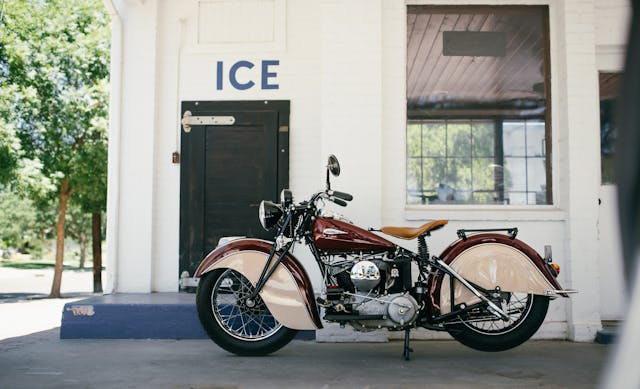9 bikes we’re watching in 2021
James Hewitt is the Hagerty Valuation team’s resident motorcycle maven, having owned more than a hundred classic bikes. He finds zen in analyzing motorcycle valuation data for Insider.
To ride a motorcycle is to feel freedom. It’s a feeling many people seem to be chasing at the moment. Superbike maker Ducati, for instance, reported record Q3 and Q4 sales after taking a beating early in the pandemic. We observed the same with classic bikes: 34 percent more motorcycles were added to Hagerty policies in the summer of 2020 than in the summer of 2019.
That much increased interest is bound to shake up the market. By studying our insurance data, along with the bikes people viewed on the new Hagerty Motorcycle Price Guide, we’ve been able to identify nine motorcycles from five market segments that we’ll be keeping an eye on throughout 2021.
Homologation sportbikes: Plastic is now classic
As is the case with cars, motorcycle manufacturers often have to build a limited-production, road-going version of their racing models in order to satisfy competition requirements. Proximity to motorsports has always been a factor in motorcycle collecting, but until somewhat recently, the homologation specials of the 1980s and ’90s, recognizable for their plastic fairings, appealed only to a small crowd. Now, like 1980s homologation rally cars, the rare, high-performance motorcycles of that era are getting more attention.
1984–1986 Yamaha RZ500
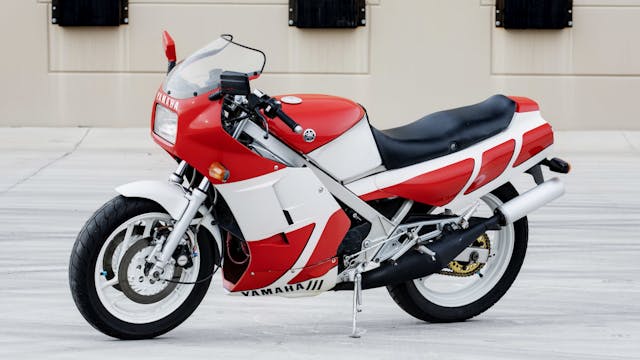
#2-condition (Excellent) value: $20,500
The RZ500, never sold in the United States, was a road-going replica of the Yamaha YZR500 GP. Emphasis here on “GP,” rather than road-going. A two-stroke engine defines motorcycles for a certain generation—the smell of premix, the distinctive ring ding of the pistons firing, and the whack of its powerband—and a 500cc V4 two-stroke GP bike is the absolute pinnacle of this sensory experience.
At $20k for a nice example the RZ500 already isn’t cheap, but think of it like renting a Ferrari in Tuscany and then falling in love with it. It’s an experience, and people will pay to be able to have that experience whenever they want.
Riders who came of age when two-stroke bikes were new (70 percent of Hagerty members who own an RZ500 were in their teens or twenties when the bike came out) are in the prime of their buying activity now. We’re watching the V4 two-strokes such as the RZ500 and Suzuki RG500 to see whether prices climb even higher or if buyers pass them over for later four-strokes.
2003–2006 Ducati 999R

#2-condition (Excellent) value: $18,100
The Pierre Terblanche-designed Ducati 999 lasted only four years before a complete redesign. The 916, 996, and 998 that preceded it together lasted nine years. Why the quick turnaround? Well, the 999 wasn’t lovingly embraced when it came out. It was a massive departure from previous Ducati styling, and the stacked headlights looked more train than motorcycle.
Over the past couple of years, though, the 999 has gained a following and its values have started to pitch upwards (from a low of $5k two years ago for a base model 999 rider to $6k–$7k now.) At the top of the range is the 999R, a limited-production homologation superbike that had an MSRP of over $30k (a first at the time). These have never been cheap bikes, and most have long been with riders who appreciate their machines. We suspect that as the appreciation for the styling grows, collectors will start paying a premium to pry the rare 999R (especially limited-build Fila- and Xerox-liveried models), out of owners’ hands.
1980s Dirt Bikes: Vintage off-roading thrills on a four-figure budget
With 1980s nostalgia in vogue and enthusiasm for off-road collector vehicles on the rise, there’s a neat opening for 1980s dirt bikes, which are fun, affordable, and simple to maintain—and take up less space in a garage than a vintage SUV. They also make a good, relatively cheap prospect for thrill-seekers hoping to relive the “good ol’ days” after being shut inside for quarantine. Because so many of these motorcycles were used as intended, relatively few survive in clean condition.
1979–89* Kawasaki KX60, KX80
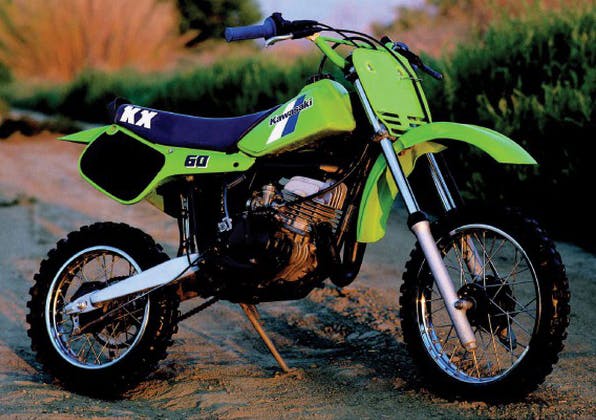
#2-condition (Excellent) value: $1,200
You may not have expected to see this bike on the list (we certainly didn’t), but Hagerty Motorcycle Price Guide traffic to the Kawasaki KX60 and KX80 in 2020 was over 3x higher than in 2019. That got our attention.
The KX80 launched in 1979 to a growing mini-bike segment—by 1980 all four major Japanese bike manufacturers were competing. The competition from the Honda CR80R, Suzuki RM80, and Yamaha YZ80 (the latter of which had been the segment’s go-to racer) was fierce against the lagging Kawasaki, but every year Kawasaki improved. By 1983 the KX80 had gained water cooling and a mono-shock, and the new KX60 was introduced. These two bikes would go on to launch the careers of many professional motocross racers and eventually inspired the success of Kawasaki Team Green, the most successful youth motocross development program in history.
With riders wanting to relive their youth and finding themselves willing to spend extra for something fun, the early motocross racers are primed to see an uptick. The acceptance of plastic in the collectible mainstream also helps the case.
*We know this bike was made well beyond the ’80s, but we’re focusing on this decade.
1979–1984 Honda XR500

#2-condition (Excellent) value: $3,700
“Ridden hard, put away wet” describes many a Honda XR series. The XR500 was a cheap dirt bike for so many years that there aren’t many nice examples left. The combination of attrition and nostalgia is leading buyers to pay a premium for XRs in the best condition.
Last week, for example, a pair of XR80s sold for $13,650. It’s not uncommon for one huge sale of a particular vehicle to light a fire, bringing more examples to market and leading to more big sales. We’ve seen it happen with cars several times. Just look at the current Dodge Viper market. Now, we’re waiting to see how these big XR thumpers perform and whether any pristine original examples pop up at auction. They could spark the ’80s enduro market.
Niche Italians: Riding the Japanese superbike wave?
1975–1980 MV Agusta 750 S America
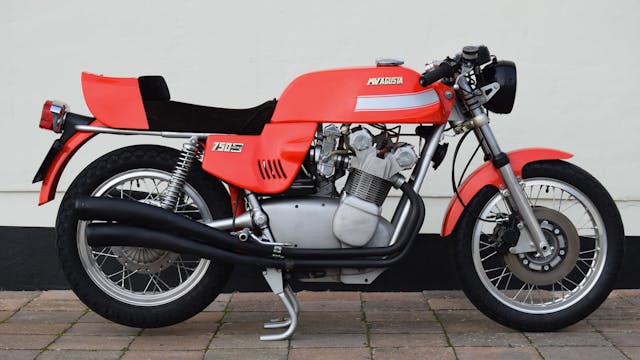
Average #2-condition (Excellent) value: $81,000
The MV Agusta 750 S is one of the most stunning motorcycles of the early ’70s, and perfect examples demand over $100k, like the 1973 model that sold for $137,500 in Las Vegas last year. After the 750S came the 750S America, which lasted from 1975 to 1980 and came in a few different forms. It lost the classic styling but maintained the hand-built exotica and evolved to focus more on a grand prix-racing experience.
When new, the 750 S America cost three times more than the the Honda CB750s and Kawasaki Z1 of the day. Today, Japanese superbike values are climbing higher every year, having nearly doubled over the past five years. It remains to be seen if late ’70s Italian superbikes from niche manufacturers like MV Agusta can ride the wave of Japanese value gains. We certainly see more interest: 32 percent more 750S Americas were added to Hagerty clients’ collections in 2020 than in 2019. But increased demand doesn’t always translate to higher prices, as the market can get flooded with examples for sale. That seems to be happening to the Ducati 750SS round case: In 2019 one sold for $247,500 sale at Mecum Vegas, but when Mecum brought twice as many to auction in 2020, prices stalled.
British Icons: Will classic cool appeal to a new generation?
British motorcycles have an unparalleled tradition, offer visceral sensations, and distinct style. The enduring design of bikes like the Triumph Bonneville, for example, are proof positive that their appeal transcends generations. But are buyers always going to be willing to pay a premium for the early greats?
1948–55 Vincent Black Shadow
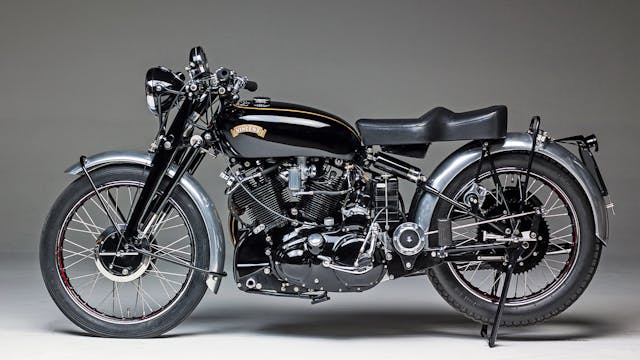
#2-condition (Excellent) value: $94,500
The Vincent Black Shadow is one of the best known motorcycles outside of the bike world. When car collectors step into the motorcycle market, they tend to bring a lot of money with them, and many of them eye a Vincent as a decorative element for their pristine garages. The Black Shadow isn’t just art, though. Considered one of the world’s first superbikes, it kept the top-speed record for a production motorcycle all the way to the debut of the 1973 Kawasaki Z1.
Values for these venerable bikes have been sliding from their peak in 2016. The number added to insurance policies with Hagerty slowed some 57 percent 2020 even as other bikes gained ground. The increase in Vincents insured in large collections (five vehicles or more) similarly slowed last year and trails what we’re seeing for other bikes. In other words, deep-pocketed car collectors seem to be turning their gaze elsewhere.
As values drop, this could go one of two ways for Black Shadows: Buyers may decide Vincents are suddenly deals and snap them up, or the perception could be that the ship has sailed.
1959–1962 Triumph Pre-unit Bonneville

#2-condition (Excellent) value: $15,500
The Triumph Bonneville is more than just a motorcycle. It represents an entire era of British bikes and a certain bad-boy lifestyle.
To many Baby Boomers, this is the bike. A modern remake, which came out in 2001, has been a large factor in reviving the Triumph brand and proves there’s multi-generational appeal, but the jury is still out on whether younger buyers will prize the originals.
We’ll thus be watching the most expensive of these bikes, known as “pre-unit” Bonnevilles because the crankcase, primary case, and gearbox were separate items bolted together externally. In 1963 the bike was improved with “unit” construction that combined the crankcase, primary, and gearbox into one. This reduced the weight and set the style for all Bonneville engines to come. Nevertheless, the early pre-unit bikes are rarer and lead the way for Bonneville values.
Those values have plateaued recently at less than $20k. If younger collectors show interest, expect prices to stay there, but if they shift toward Japanese bikes, they might fall.
Harleys vs. Indians: The rivalry continues
We can’t examine the classic motorcycle market without talking about Harleys—and we can’t talk about Harleys without also mentioning Indians. Starting in the early 1900s, the two battled on the race track and showroom in a war that lasted five decades before Harley ultimately prevailed, but in the classic motorcycle market, the two brands have long performed similarly. As time goes on, and the demographics of the collector bike market change, will Indians and Harleys remain in lockstep, or will their values diverge?
1936–47 Harley-Davidson EL/FL Knucklehead

Average #2-condition (Excellent) value: $70,800
We recently looked at this question from the Harley standpoint. Those worried about their old Harleys sitting unwanted by the younger collectors will be pleased to know the data shows millennials are willing to pay a premium. In the last two years, Millennials have quoted prewar Harleys at values 19 percent higher than Boomers, 12 percent higher than Gen–X and equal to preboomers. The sample size is small, but the evidence that millennials will pay real money for collectible Harleys holds all the way through the ’60s, where the sample sizes become significant.
We thus expect prices will continue to appreciate for the Knucklehead (named for the way its cylinder head makes a fist shape). The bike helped shape a distinctive style for Harley, and even today its iconic large fenders and wide tires can be found throughout the brand’s lineup.
2020 saw a new record for a Knucklehead when the “Greenie” bike sold for $220k. Will a Knuckle selling for $50K–$70K continue to entice, or is the ceiling within sight? For now, it looks like Millennials and Gen-Xers value them just as much as the older generations.
1940–1953 Indian Chief
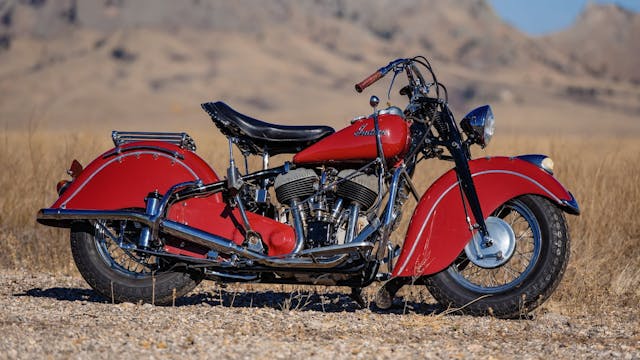
Average #2-condition (Excellent) value: $32,300
Values for Harleys and Indians have always been closely linked. When looking at average quote values of 1953 and older Harleys and Indians, they track similar trajectories. If one is up, the other is up. If one goes down, the other is down, too.
A major (if obvious) difference between the brands, though, is that one ceased to exist for nearly six decades. We wondered if that long absence might cool interest among younger collectors.
Indian fans will be pleased to know it hasn’t in the slightest. Gen–X and Millennial collectors quote Indians at higher values than both Baby Boomers and Preboomers.
The Indian Chief, one of the brand’s most famous and longest-running models, debuted in 1922 and left the market in 1953, but it is the 1940–53 models, with their swooping skirt fenders and sprung rear ends, that are the most famous. In 1950 the Chief gained telescopic forks (Harley gained these on the Panhead in 1949) and a larger 80cid engine. By 1953 the factory closed for good until revitalization efforts by companies in the late ’90s and a successful revival by Polaris in 2011.
Tracking sales in 2021 of the elegant 1940 and later Chief, and comparing them to those of contemporary Harleys, should shed more light on whether these brands transcend generations. We’ll also get to see whether these iconic American motorcycle brands continue to share a destiny in the collector bike market, or if their fates will begin to diverge.
***
Check out the Hagerty Media homepage so you don’t miss a single story, or better yet, bookmark it. To get our best stories delivered right to your inbox, subscribe to our newsletters.
